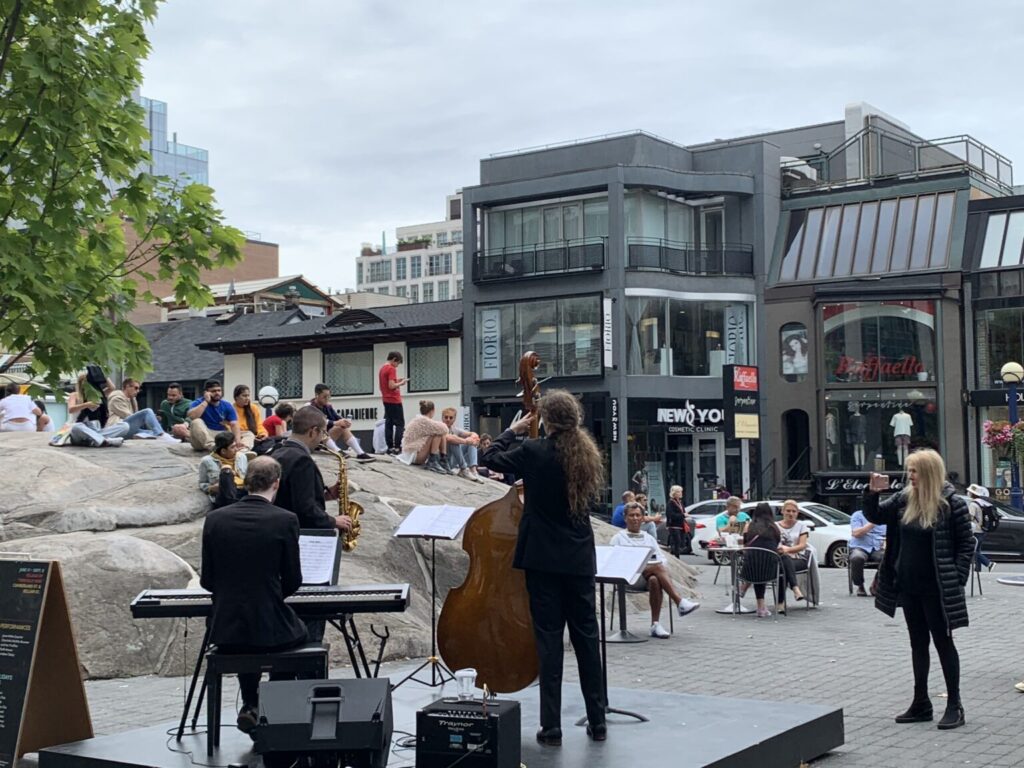
What does it mean to create an inclusive public realm?
By Gail Shillingford,
Principal, Planning and Landscape Practice, B+H
There is so much more to be considered beyond the physical space when we talk about designing an inclusive public realm. When we address inclusivity as designers and planners, we are addressing both the mental and the physical experience of a community. This should be a fundamental pillar to every design approach and process, particularly when designing truly equitable public space.
Let’s start with what ‘an inclusive and equitable public realm’ means to me. As a person of colour, walking into a new space, I often question: Do I feel comfortable? Do I feel safe? As I navigate through a city, I examine what spaces make me feel a sense of belonging, and what spaces don’t. What conscious steps have been taken by its architects and planners to facilitate this level of equity, accessibility and lack of bias or judgment amongst those who utilize it?
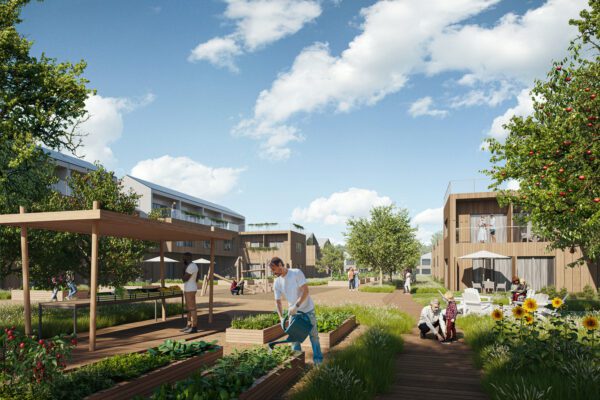
Equitable and inclusive public spaces do not discriminate on gender, race, or age demographic. They are not ableist nor classist, and what’s more, they have been carefully constructed to bring different backgrounds and cultures together in an organic way. Truly inclusive public space emphasizes cohesion and (positive) collision between communities, which is something we need now more than ever.
In the wake of George Floyd and Black Lives Matter protests, the deep economic divisions exacerbated by the COVID-19 pandemic, amongst many other fractures in our social fabric, it is critical that designers, create public space to unite communities, rather than divide them.
So, how do we get there? That’s one question we ask at B+H.
Well-designed public space, from parks to plazas to libraries, can in some ways quell the negative effects of gentrification. What do I mean by this? Well, for one, it is important to acknowledge that ‘gentrification’ itself has become a dirty word. In many cases, the negative connotation associated with it are justified, particularly when lower-income communities are redlined and no effort is made on behalf of the City, the developers, and their design teams, to create an integrated neighbourhood. But, in some cases, gentrification can be managed in a way that both respects the needs of the existing community, while also welcoming in a new one. This is rooted in an inclusive consultation process that encourages community storytelling.
Let me share an example. As the Riverside community in the East End of Toronto underwent a transformation, with the introduction of new residents, new condos, a boutique hotel, and craft breweries, attention turned to their local park, and what exactly to do with it. Joel Weeks Park had been an anchor of the community, hosting family barbeques and basketball games. But as the neighbourhood around it saw an influx of investment, it prompted the City to reevaluate the park, as well. Did it need to change too? And if so, how?
Together with Janet Rosenberg & Studio Inc., I was brought in as part of an engagement team to ask these questions to the community. Our team held an extensive community consultation process that prioritized hearing a diverse community tell their personal stories of their vision for the park. We collected a patchwork of stories spanning demographics, from new immigrants to school children, to older couples who had resided there over 20 years. And from these discussions, we left with a different vision for the park than we began.
We discovered that the existing basketball court was a critical social anchor for the local children. It held a tremendous amount of emotional currency that couldn’t be replicated tearing down and building something new. Certain components of the park were improved, and new areas were introduced. Keeping some of the old was important to creating a space where both the existing and incoming community felt a sense of shared belonging. It allowed for true community integration.
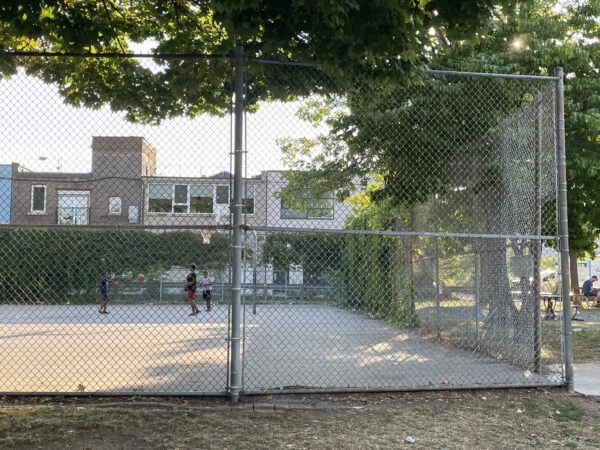
This process of community storytelling reinforced a crucial lesson about our built environment. Creating valuable public space can’t be a ‘copy and paste’ effort. It’s not a matter of ‘good programming plus flexible design equals success.’ It’s about context.
Every neighbourhood has an idea of what a sense of belonging, comfort and safety means to them. For Joel Weeks – it was their basketball court. It was creating a central space for children to play and allowing a landscaping space for senior mothers to garden. For another neighbourhood, it will be something completely different. There aren’t any concrete answers but just a shared understanding that as planners and designers, we need to constantly ask questions, and ask them to everyone, not just the loudest voices in the room.
Another crucial component to ensure that underrepresented community voices are heard is by building representation in the design and planning team. As a woman and a person of colour, I bring a unique perspective and set of experiences. The design of cities is often steered by mostly white men, yet the populations that are often underrepresented or excluded are diverse. How does this make sense? An inclusive public realm needs the perspectives of designers, planners who know what it’s like to not feel included.
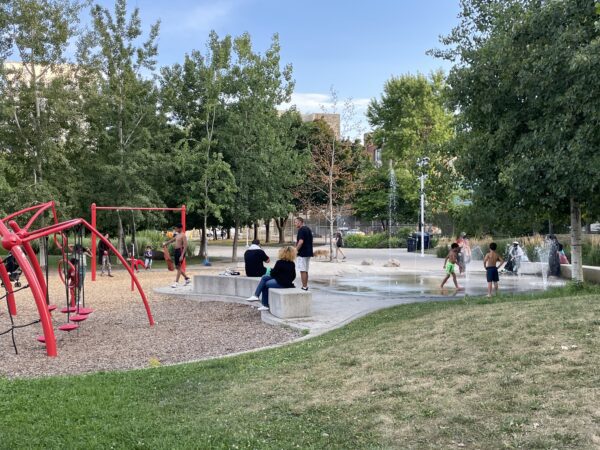
As a profession, we need to push for more representation in our teams. Only then can we address the mental and emotional needs of the end user. This is a goal that we are striving towards, as part of my role on the Justice, Equity, Diversity, and Inclusion Committee for the Canadian Society of Landscape of Architects.
What’s more, it allows for a much richer and honest consultation process. If members of a diverse community are active participants in the design process, they can guide design that reflects who they are, and the design will result in better public space for all.
Whenever I need a reminder of what successful public space looks like, I take a trip to Dufferin Grove Park, a neighbourhood park in the northwest pocket of the city. This was one of the first parks in Toronto in which the City gave the community a level of autonomy (to a degree), to program and organize their space. The community has played a major role in shaping the parks structure, amenities, and running of the events.
To some, Dufferin Grove Park may appear as a typical urban neighbourhood park where people hang out. But I see a cultural contributor, a destination, an inclusive amenity that is bringing people together from all different neighbourhoods to experience the local community’s unique culture. Ultimately, the design of our public realm is not just about trees and benches, and a great plaza. It’s about people.
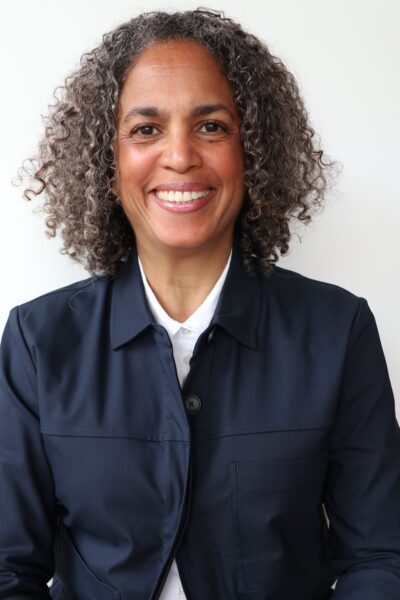
Gail Shillingford has over 25 years experience in master planning, urban, and landscape design. With a focus on building resilient communities, her work is driven by a collaborative process in which community and stakeholder engagement is paramount. Gail joined B+H as Principal of the Planning and Landscape Practice earlier this year. visit bharchitects.com

